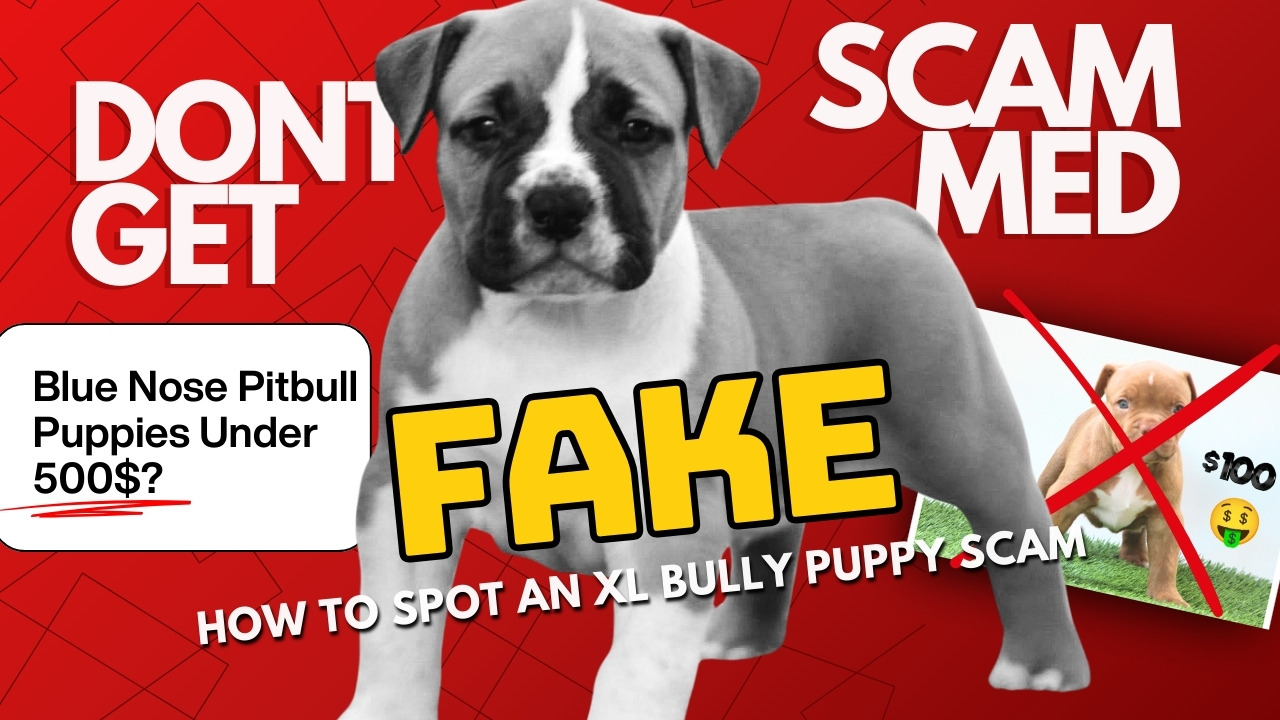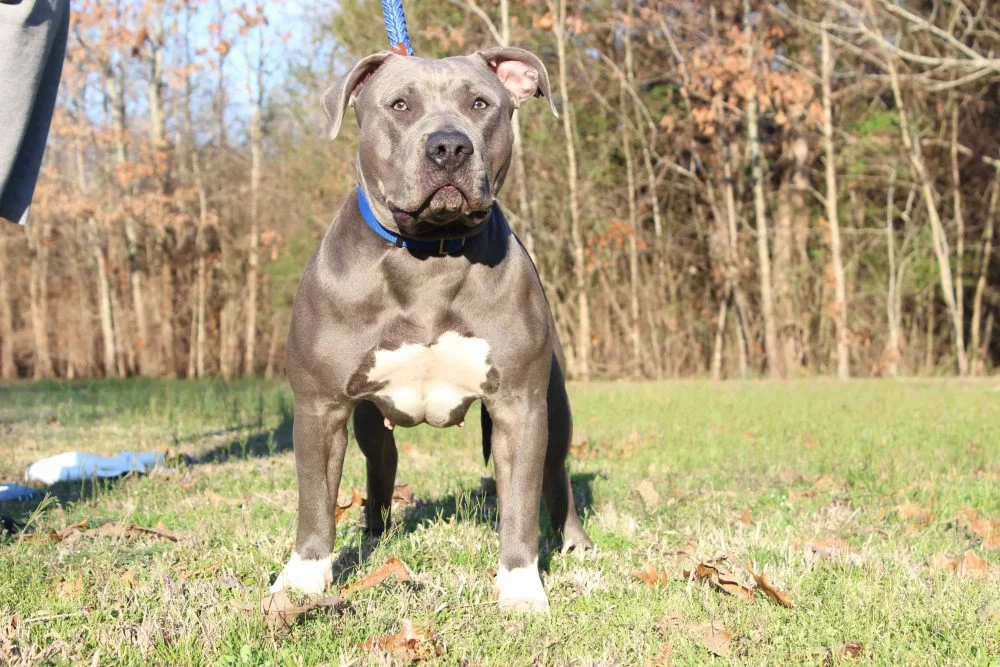If you’ve been searching for your dream bully pup, you’ve probably seen tempting ads plastered everywhere—but knowing how to spot a fake XL blue nose Pitbull puppy listing can save you heartache and money. Scammers love buzzwords like “XL,” “blue nose,” and “champion bloodline,” then bait buyers with stolen photos, unrealistic prices, and pressure to “pay now.” In this guide, you’ll learn the exact red flags to watch for—image and video proof to demand, paperwork to verify (ABKC/UKC, health records, microchip), safe payment methods, and how to confirm a breeder’s identity, social presence, and vet references. Follow these steps and you’ll separate trusted xl bully breeders from copy-paste scams in minutes.
What “XL” really means (American Bully vs. APBT)
The term “XL” usually refers to size categories used by American Bully registries—not a separate breed of the American Pit Bull Terrier (APBT). In simple terms, “XL” describes a larger, heavier frame. Many scammers blur lines on purpose, labeling puppies “XL blue nose Pitbulls,” “XL Blue Nose APBT,” or “XL Bully” interchangeably to reel in more unsuspecting buyers. A legitimate seller will explain their dogs’ breed classification (e.g., American Bully XL class) and show appropriate registration or lineage details.
“Blue nose” is a color trait, not a separate breed
A “blue nose” is just a dilution of black pigment causing a bluish-gray nose and coat. It’s not a distinct breed or a magic intelligence/temperament switch. Scammers exploit the term because it’s trending and photogenic—so they slap “blue nose” on any gray puppy (or a stolen photo) to inflate interest and price.
Why scammers love buzzwords and hype
“XL,” “blue nose,” “champion bloodline,” “razor edge,” “monster head”—these words press emotional buttons. Scammers pile on buzzwords, add a “today-only” discount, and pressure you before you can think clearly. Your defense? Ask for proof and paperwork—then verify both.
How Puppy Scams Typically Work
Stolen photos and copy-paste descriptions
Fraudsters rip gorgeous puppy photos from legit breeders and repost them everywhere: Facebook groups, Craigslist-style sites, classifieds, even fake breeder websites. One telltale sign: identical captions appearing across multiple pages or countries.
Too-good-to-be-true pricing and fake urgency
If the “XL blue nose” pup is priced far below market averages—or the seller pushes “Only one left—pay now or lose it!”—assume it’s bait. Real breeders vet you as much as you vet them; high-pressure tactics are not their style.
Phony shipping/escrow intermediaries
Another trick: “We’ll use our shipping agent,” or “Pay the courier; we’ll refund extra costs.” Fake escrow sites mimic legit brands and vanish after payment. Always verify the company independently—never through links the seller provides.
Ghosting when you ask for proof
Ask for a live video call, timestamped photos, or vet references and watch them evaporate. Silence or excuses (“camera broken,” “I’m traveling,” “poor signal”) are flaming red flags.
Quick Red-Flag Checklist for Any Listing
Price, location, and contact anomalies
- Way below market price, or oddly “free” with “just shipping”
- Location changes mid-conversation (“We moved states yesterday”)
- Only messaging apps, no real phone number, no business name
Stock or watermarked images
- Photos stamped with another kennel’s watermark
- Images that look studio-perfect but recur on the web (run a reverse image search)
- No casual photos/videos of pups interacting at home
Vague health, pedigree, or parent info
- No specific birthdate or litter size
- No shots/deworming dates or vet clinic name
- No info on dam/sire health tests (hips/heart, etc., where applicable)
Grammar tells and odd payment requests
- Broken English with aggressive tone or robotic replies
- Demands for crypto, wire, or gift cards “for speed”
- “Deposit first, details later”—hard pass
XL Blue nose pitbull Breeder’s verification
Business name, physical address, and phone checks
Request the legal business name, physical address, and phone number. Confirm the breeder’s address on Google Maps/Street View. Call the number at normal hours. A legitimate breeder or kennel typically has a traceable footprint.
Vet references and past buyer proof
Ask for the clinic that services their dogs (name, number) and call it. Also request contactable references from recent buyers. Scammers either refuse or give numbers that never pick up.
Social history and posting cadence
Legitimate kennels post over time—pregnancy updates, birth announcements, weekly pup videos, vet visits, growing milestones, and buyer pickup days. A page created last month with 30 model-perfect photos and no comments is suspect.
Consistency across website, Facebook, Instagram, TikTok
Names, logos, phone numbers, and email addresses should match. Tiny inconsistencies can expose fakes—like one digit off in a phone number or different kennel names on different platforms.
Photo & Video Proof You Should Demand
Reverse image search (Google Lens/TinEye)
Right-click or screenshot images and run them through Google Lens or TinEye. If identical photos appear tied to other kennels, different countries, or posts from years ago, you’re looking at stolen media.
Live video call + unique “proof of life” requests
Ask for a live video call at a specific time. Request:
- The puppy wearing a colored ribbon you choose
- The breeder to hold a handwritten note with your name + date
- A quick shot of the dam/sire (if available and safe)
No scammer can deliver this convincingly on demand.
Timestamped photos with a custom note
A still image works too if it’s fresh and specific: your name, today’s date, and something quirky (“draw a star next to the pup”). That’s much harder to fake convincingly across multiple photos.
See the dam/sire on camera (when safe/appropriate)
Ask to see parents (or at least the dam) via video. This reveals temperament and living conditions and filters out sellers who don’t actually have the dogs.
Paperwork That Real Breeders Provide
Registration type (e.g., ABKC/UKC) & what it means
If the listing claims ABKC/UKC or similar registration, ask for a preview copy of the litter registration or the parents’ registration numbers (with personal info redacted). Verify directly with the registry if possible.
Health records, vaccinations, and deworming
You should see a vaccination schedule, deworming dates, and the clinic that performed them. Real records include batch numbers and vet signatures.
Sales contract, health guarantee, return policy
Reputable sellers provide a clear contract covering price, deposit, delivery/pickup terms, a health guarantee, and return policy. If they dodge or send a one-line invoice, walk away.
Microchip and transfer instructions
Microchipping is common. Ask who registers the chip and how transfers happen. Scammers rarely mention microchips because they don’t have pups to scan.
Payment Safety 101
Safer methods (credit card, verified platforms)
Use credit cards or reputable platforms that offer disputes/chargebacks. If you must place a deposit, keep it modest (e.g., 10–20%) and tied to a signed contract.
Never use crypto, wire, gift cards for deposits
These are nearly impossible to reverse and are a scammer’s best friend. “We only accept crypto” = instant no.
Reasonable deposit sizes and receipts
Get a receipt with kennel name, pup details, date, and the balance due. Overly large deposits or pushy “pay in full now” demands signal trouble.
Split payments on pickup or verified delivery
Arrange to pay the balance in person when you pick up, or on verified delivery with video proof and live contact.
Shipping & Transport Without the Scams
Meet-in-person vs. compliant ground transport
The safest method is in-person pickup at the breeder or a public spot nearby. If distance is an issue, use a licensed, reviewed ground transporter. Read contracts and speak with the transporter—not just the breeder.
Airline rules and realistic fees
Air shipping has strict rules (age, crate specs, temperatures). If someone advertises suspiciously cheap or “free shipping”, be skeptical. Expect realistic fees and clear airline confirmation.
Verify transporters (licenses, references, insurance)
Ask for company name, USDOT/insurance (if applicable), and references. Call references and search for complaints.
Avoid “free shipping” traps
Scammers lure with free delivery, then fabricate “urgent vaccination fees,” “unexpected insurance,” or “temperature-controlled crate upgrades.” These cascades of fees are classic fraud patterns.
Audit the Website Like a Pro
Domain age, WHOIS, and contact transparency
Use a WHOIS lookup to see when the domain was registered. A brand-new site can still be legitimate—but pair that with a missing address, no phone, and stock photos, and it’s risky.
Unique photos vs. obvious stock
Real kennels have messy, lovely, real-life photos: pups on blankets, in yards, with toys, with humans. Sites full of catalog-perfect images and no behind-the-scenes content should raise eyebrows.
Review patterns and scammy comment loops
Beware too-perfect reviews, all posted within a few days, or comments that look generated (“Great kennel! Best experience!” repeated).
Typos, missing policies, broken pages
Sloppy sites often hide sloppy (or fraudulent) operations. Look for clear policies (health guarantee, returns, privacy) and working contact pages.
Ten Questions That Smoke Out Scammers
- What breed classification are your dogs (American Bully XL vs. APBT)?
- Can I see the parents’ registration and health testing (where applicable)?
- What’s the puppy’s birthdate, litter size, and current weight?
- Who is your veterinarian, and may I call to confirm records?
- Can we schedule a live video call today or tomorrow?
- Will you send a timestamped photo with my name and today’s date?
- What’s your sales contract and health guarantee? May I review it now?
- What’s the pickup process or which licensed transporter do you use?
- Do you have references from buyers in the last 6–12 months?
- How do you socialize the pups and start house/crate training?
If answers are vague, defensive, or delayed—stop.
If You Suspect a Scam—What to Do
Stop payment attempts and save evidence
Don’t send more money. Screenshot everything: ads, chats, phone numbers, profiles, and payment requests.
Report to platforms and consumer agencies
Report on the marketplace (Facebook, classifieds site) and to relevant consumer protection bodies in your country. The goal is to limit further victims.
Chargeback steps for cards/PayPal
If you paid with a credit card or PayPal, open a dispute immediately. Provide all evidence, timelines, and the seller’s evasive behavior.
Help others by posting warnings responsibly
Share your experience in community groups factually and without defamation. Stick to screenshots and dates.
Safer Alternatives & Smart Buying Paths
Reputable directories and club referrals
Use breed clubs/registries and well-known directories with verification standards. Ask club officers for referrals—they often know which kennels are consistent and ethical.
Rescue/adoption options
Many wonderful bullies and bully-type dogs need homes. Rescue groups will vet you, share detailed temperament notes, and often have transparent histories.
Building a waitlist with a known breeder
Top breeders often have waitlists and detailed application processes. Patience here buys you peace of mind and a better match.
Realistic Budgeting (Beyond the Purchase Price)
Typical price ranges by region and pedigree
XL American Bully or bully-type pups with true quality lines often command premium prices. Beware listings that slash those prices by half or more; that gulf is where scams live.
Veterinary, training, and equipment costs
Budget for vaccinations, deworming, microchipping, spay/neuter (if you’re not breeding), training classes, crate, toys, and quality food. The first year is the priciest—plan ahead.
Insurance and breed-specific requirements
Check insurance and housing rules early. Some insurers/landlords have breed restrictions; you don’t want last-minute heartbreak.
Ethics & Owner Readiness
Time, training, and socialization commitments
These dogs thrive with consistent training, early socialization, and daily exercise. A responsible breeder will quiz you about readiness; scammers never do.
Breed bans/landlord rules & public perception
Research local laws and lease terms first. You’re the dog’s advocate—plan for training, manners, and public etiquette.
Responsible ownership and long-term care
From puppyhood through senior years, you’re signing up for 12+ years of care. Choosing an ethical source is the first responsible decision.
7-Step Anti-Scam Action Plan (Print This)
- Screenshot the listing and save the seller’s contacts.
- Reverse image search each photo.
- Ask for a live video call with a custom proof (your name/date on paper).
- Request paperwork previews: registration, vet records, draft contract.
- Verify third parties: vet clinic, transporter, registry.
- Use safe payments only; keep deposits modest with receipts.
- Trust your gut—if anything feels off, walk away.
Conclusion
Scammers thrive on creating urgency, using buzzwords, and capitalizing on your excitement. When you slow down, ask targeted questions, and verify people, paperwork, and pups with simple checks, most fake “XL blue nose Pitbull” listings fall apart in minutes. A real breeder welcomes your diligence because it mirrors their own. Use the checklists above, insist on live proof, and pay only through methods that protect you. The right puppy—and the right seller—can absolutely be found without risking your money or your heart.




